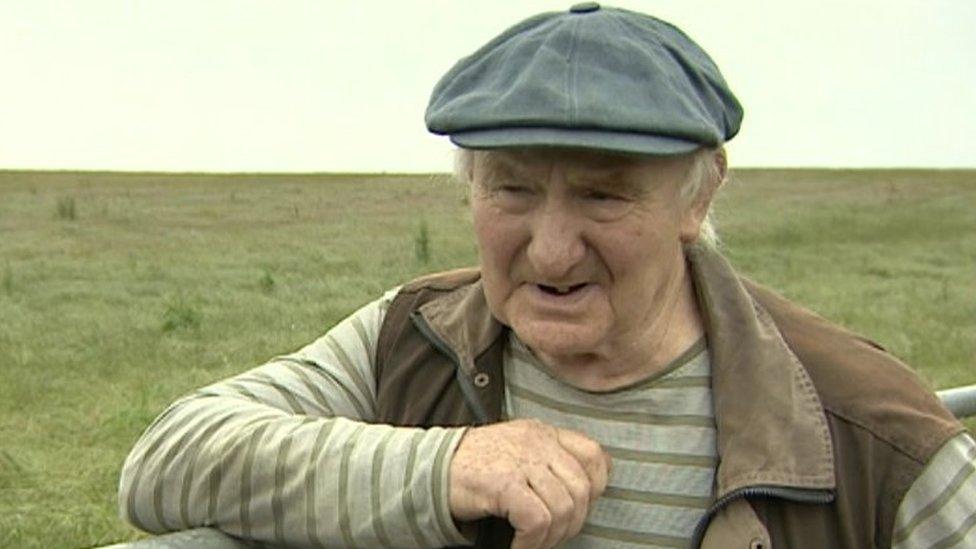Sutton Hoo: Anglo-Saxon riches reunited for 'homecoming' show
- Published

Archaeologist Chris Fern, who has helped curate the exhibition, said it harked back to a "Games of Thrones" era in England
Two of the greatest finds of Anglo-Saxon treasure have been reunited to celebrate "striking similarities".
Precious artefacts uncovered during the 1939 excavation of Sutton Hoo in Suffolk will go on display alongside the Staffordshire Hoard at the site.
The British Museum has loaned items from the Anglo-Saxon ship burial, while the hoard is the largest collection of Anglo-Saxon gold and silver ever found.
Expert Chris Fern said: "It's a homecoming for these objects."
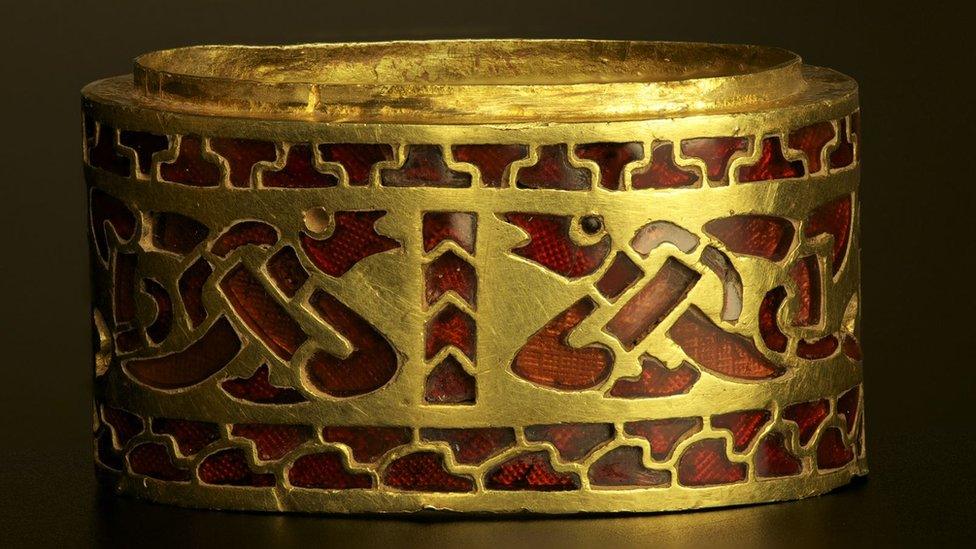
This hilt collar from a seax - a long fighting or hunting knife - was found in the Staffordshire Hoard and resembles artefacts found at Sutton Hoo
Mr Fern, an archaeologist and guest curator of the exhibition - called Swords of Kingdoms: The Staffordshire Hoard at Sutton Hoo - said it was a "dream come true" to have the trove back in East Anglia.
"Our research has shown the striking similarities between the two treasures in terms of their quality, animal art, materials," he said.
"We think it's very likely that the objects found in the Staffordshire Hoard were made here in East Anglia in the early royal kingdom in the Anglo-Saxon period.
"These are among the finest treasures from the medieval period from anywhere in Europe."
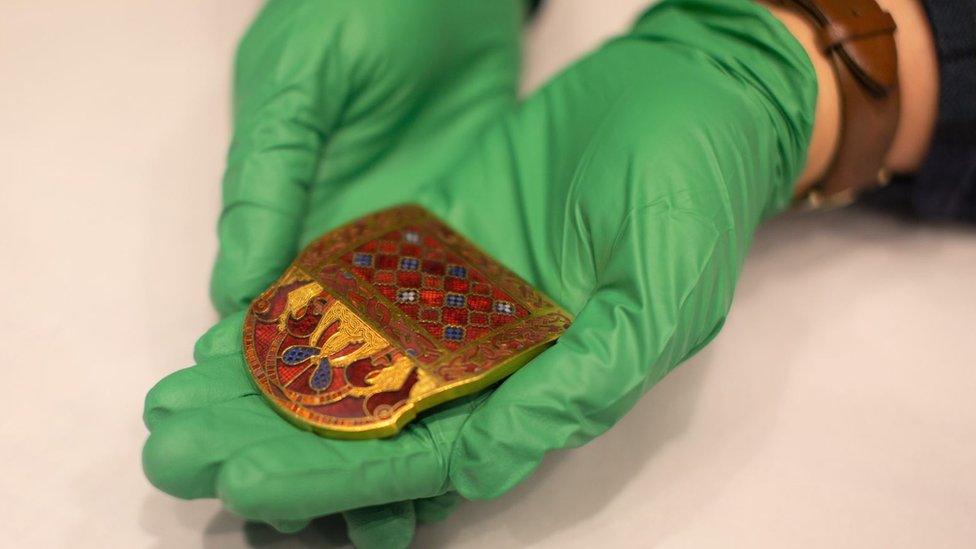
A shoulder clasp decorated with glass and garnets was found in the Sutton Hoo chamber - and resembles some Staffordshire Hoard pieces
It's believed some Staffordshire items may have been made in the same 7th Century workshops that served royal Sutton Hoo, by master craftsmen and apprentices under the command of kings, princes and elite warriors.
Mr Fern, an expert on the hoard, said the era was "a bit like Game of Thrones" with different kingdoms across Anglo-Saxon England fighting for control.
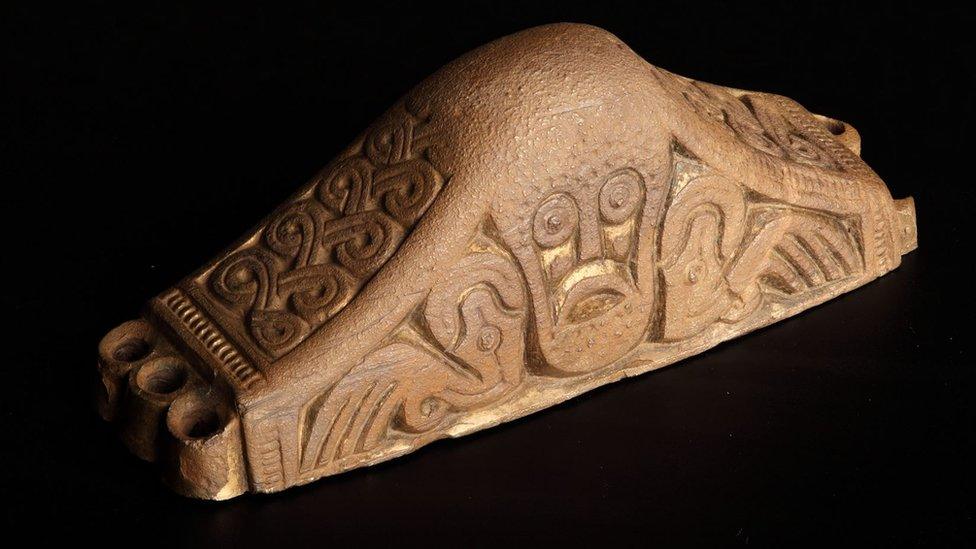
A silver pommel cap - found near the village of Hammerwich in the Midlands - has been gilded
The intricately-made treasures were unearthed by a metal detectorist in a farmer's field near the village of Hammerwich in 2009.
Much of the haul featured weaponry fittings - thought to have come from swords produced for East Anglian warriors.
It's believed the riches were looted by the kingdom of Mercia during battles and ended up buried in the field.
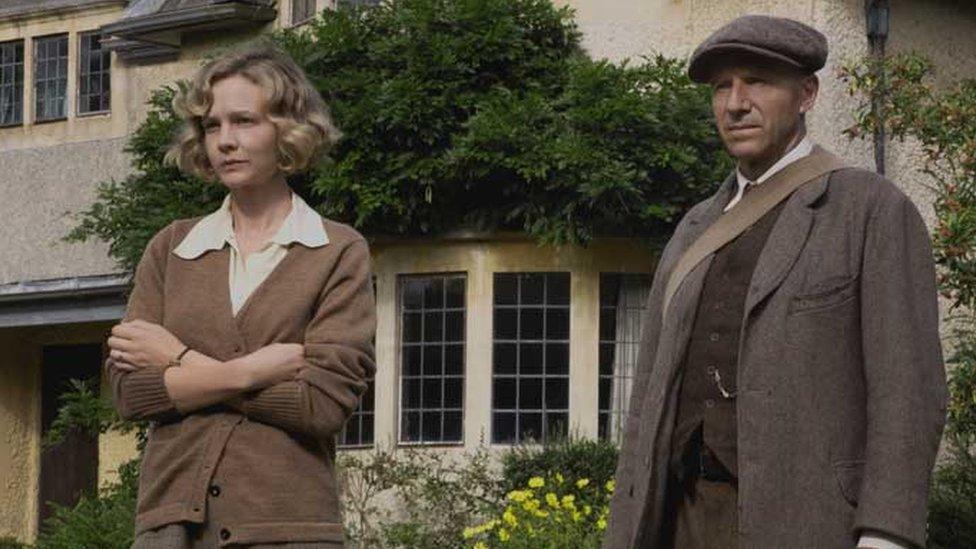
The archaeological discovery at Sutton Hoo was covered in Netflix film The Dig, starring Carey Mulligan as landowner Edith Pretty and Ralph Fiennes as archaeologist Basil Brown
The Sutton Hoo treasure was discovered when local archaeologist Basil Brown discovered a burial ship and a central chamber filled with pieces, including a warrior's helmet, a gold belt buckle, sword and shield, believed to have belonged to East Anglia ruler King Rædwald.
The excavation was recently the subject of Netflix film, The Dig.

Sutton Hoo's Laura Howarth said the exhibition was a chance to explore the connections between the two finds
Laura Howarth, archaeology and engagement manager at the National Trust-run site, said the exhibition - postponed since 2020 due to Covid - was a "celebration of a golden age of Anglo-Saxon craftsmanship".
"It's poignant and significant that these objects are returning to us on loan," she said.
"What you'll see is the pinnacle of Anglo-Saxon craftsmanship - it's this golden and garnet-adorned age.
"It's remarkable to think these objects were made 1,400 years ago without artificial lighting and the wonders of modern technology."
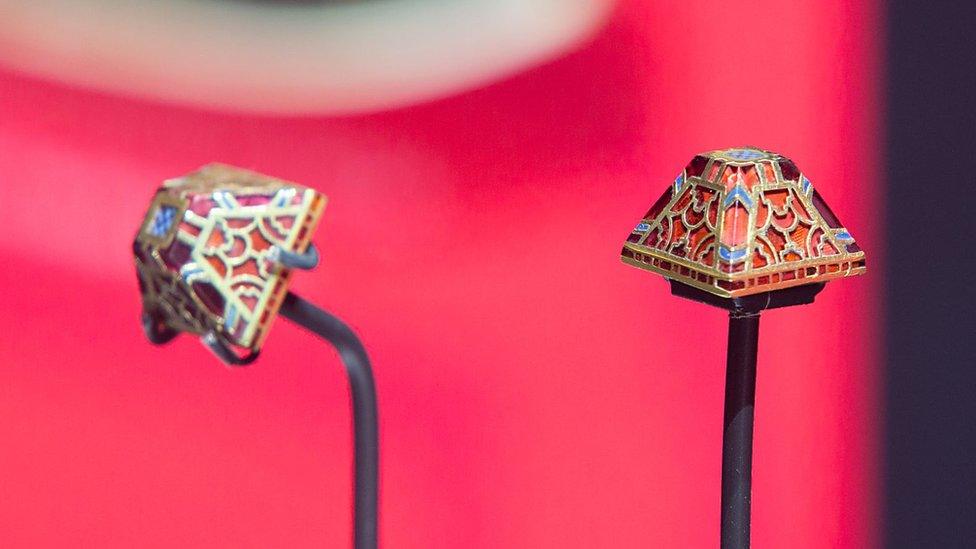
Laura Howarth from Sutton Hoo said the exhibition represented "a special and significant occasion" to see some of the goldsmiths' finest work including these bejewelled pyramids
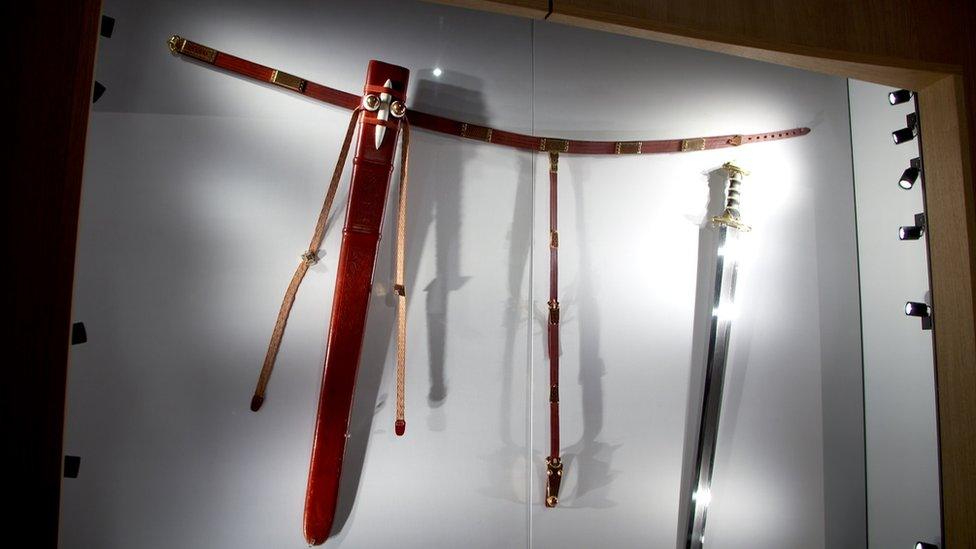
The pyramids have been featured in a replica display of a scabard to show how they would have looked in the battlefield
The exhibition runs from 19 May to 30 October 2022 at Sutton Hoo.

Find BBC News: East of England on Facebook, external, Instagram, external and Twitter, external. If you have a story suggestion email eastofenglandnews@bbc.co.uk
Related topics
- Published29 September 2021
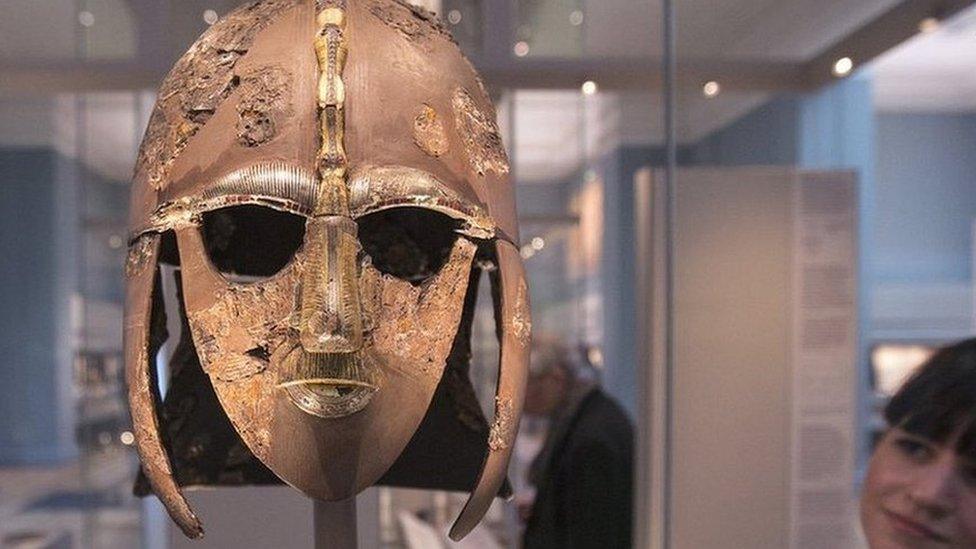
- Published27 June 2021
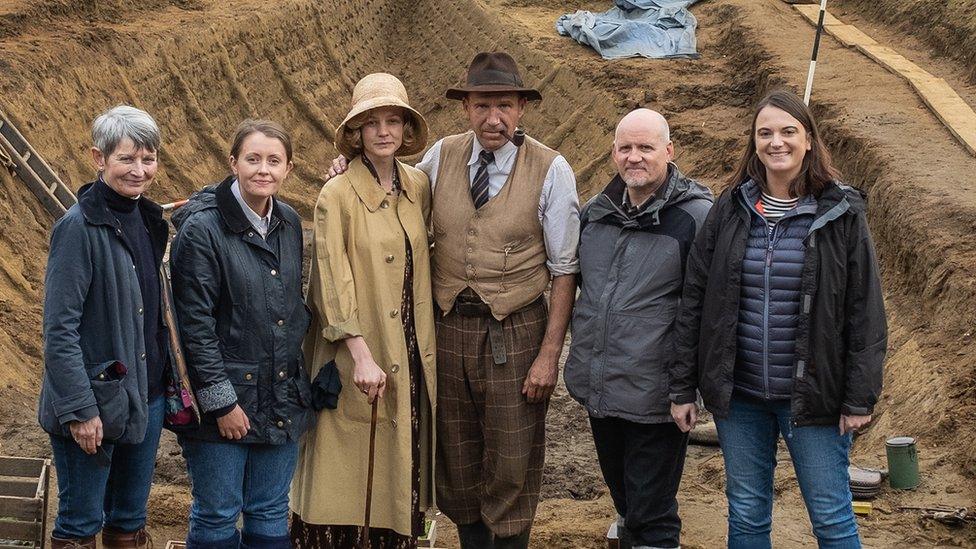
- Published2 February 2021

- Published14 January 2021

- Published17 January 2021
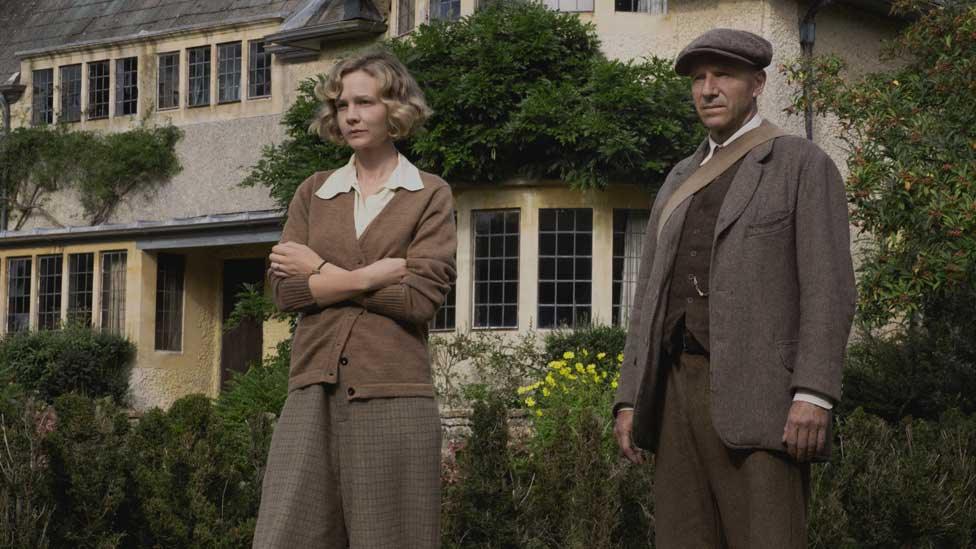
- Published5 July 2019
